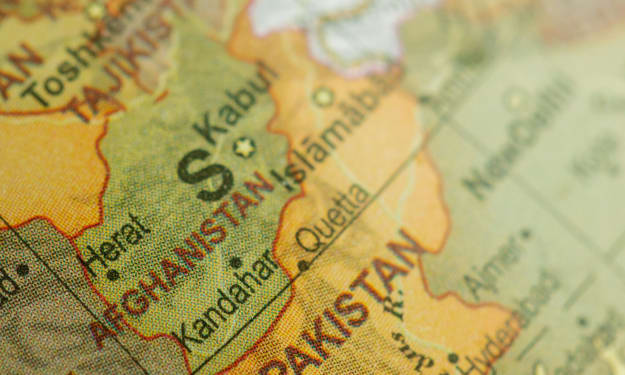The Unintended Consequences: Western Tech in Russia's War Machine.
Delve into the complex world of modern warfare as we uncover the unintended consequences of Western technology aiding Russia's military efforts in Ukraine. From microelectronics to missile components, discover how a shadowy network of shell companies exploits the global economy's intricacies, enabling Russia to maintain its military capabilities despite economic sanctions. As the conflict unfolds, the international community faces a moral dilemma, balancing support for Ukraine's defense with the inadvertent contribution to the very technology used against them. Explore the challenges, implications, and the urgent need for a comprehensive global strategy to address this evolving threat.

Vladimir Putin recently announced an escalation in Russia's air strikes on Ukraine over the upcoming days, weeks, and even months. In the midst of this conflict, a missile has become a focal point of investigation due to its origin and the crucial role Western technology plays in it. This Russian missile, equipped with wings for long-distance travel, has been a prominent weapon in the ongoing war in Ukraine.
Investigators, upon examining the missile debris, have made a startling discovery. Embedded within the missile are components bearing the logo of Vior, an American company. This revelation raises questions about the extent of Western technology's involvement in Russia's weaponry. It turns out that Russia heavily relies on Western-made components for its missiles, from basic to sophisticated systems.
The investigation delves into the intricate network that facilitates the flow of Western technology into Russian weapons. A leaked report from the Ukrainian government sheds light on the illicit pathways through which this technology reaches Russia. This clandestine network employs shell companies, fake aliases, and convoluted shipping routes to evade sanctions and supply the Russian military with vital components for missiles, drones, and other weaponry.
Ukraine, in its effort to defend against Russian attacks, is also acquiring Western air defense technology. Paradoxically, this means that Western technology is being used both to attack and defend in the conflict. The revelation of these smuggling networks serves as a critical reminder of how technology, originally developed for peaceful purposes, can be weaponized and impact global geopolitics.
The article emphasizes that Russia is critically dependent on Western microelectronics, requiring 450 Western-made components for its weapons. The majority of these components, essential for missile guidance systems and communication controllers, come from the United States. The intricate global economy has created a situation where enforcing sanctions becomes a complex challenge.
Despite economic sanctions aimed at restricting Russia's access to Western technology, the investigation uncovers a shadowy market that successfully navigates around these restrictions. The article exposes cases where companies in New York, Singapore, Turkey, and other countries serve as intermediaries, facilitating the flow of microelectronics into Russia.
The shadowy nature of this network makes it challenging for authorities to enforce sanctions effectively. Shell companies play a crucial role in disguising the true nature of these transactions, making it a cat-and-mouse game for enforcement agencies. The article suggests that disrupting these supply chains, arresting intelligence officers involved, and introducing uncertainties into the network could be potential strategies to impede this illicit flow of technology.
In conclusion, the investigation into the smuggling market reveals a complex and challenging landscape where Western technology inadvertently supports both sides of the conflict in Ukraine. The article underscores the need for continued vigilance and international efforts to curb the illegal flow of technology into war zones, highlighting the interconnectedness of the global economy with modern warfare.
The situation presents a moral dilemma for Western nations, especially those providing military aid to Ukraine. While they support Ukraine's defense against Russian aggression, there is an unintended consequence – the technology they supply is, in some cases, being used against them.
The Ukrainian government, recognizing the urgency of the situation, has sounded the alarm by sharing a leaked report with Western diplomats. This report serves as a plea for assistance, signaling that while the West is aiding Ukraine with weapons and defenses, it's inadvertently contributing to the technology used by Russia against Ukrainian forces.
The complexity of the global economy and the reliance on intermediaries make it challenging to cut off this illicit supply chain completely. The shadowy market adapts and evolves, using shell companies and obscure routes to continue providing Russia with the microelectronics it needs for its military arsenal.
Addressing this issue requires a multi-faceted approach. Disrupting supply chains, as suggested, is one strategy. However, it's clear that a more comprehensive international effort is needed to tackle the root causes. Cooperation among nations to strengthen sanctions, enhance intelligence-sharing, and tighten regulations around technology exports is crucial.
Moreover, raising awareness about the unintended consequences of such transactions is vital. Western companies need to be more vigilant about their dealings with intermediaries and ensure their products aren't ending up in the wrong hands. Governments must enforce stricter controls on the export of sensitive technology, and the public should be informed about the potential dual-use of seemingly harmless components.
As the conflict continues, it is imperative for the global community to reassess and adapt its strategies. The goal is not only to support Ukraine's defense but also to prevent inadvertently aiding its adversary. This requires a delicate balance between supplying necessary resources for a nation under attack and implementing measures to ensure that these resources are not turned against the suppliers themselves.
In the ever-evolving landscape of modern warfare, where technology plays a pivotal role, staying ahead of the game necessitates constant vigilance, cooperation, and adaptability. The story of Western technology flowing into Russian weaponry serves as a stark reminder that the consequences of global interconnectedness extend far beyond economic interests, impacting the very dynamics of conflict and security.






Comments
There are no comments for this story
Be the first to respond and start the conversation.